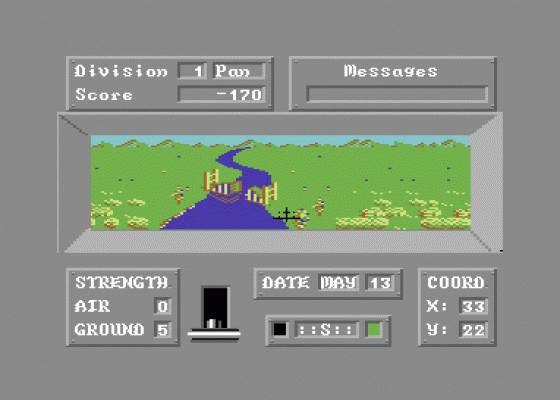
C&VG
 1st September 1987
1st September 1987
Categories: Review: Software
Publisher: Ariolasoft
Machine: Commodore 64
Published in Computer & Video Games #71
Blitzkrieg
Novelist Len Deighton wrote his factual history Blitzkrieg: From The Rise Of Hitler To The Fall Of Dunkirk in 1979, and this new game has only a passing connection with the book.
For one player only, taking the Germans against the computer, it falls into two parts.
In the first part the player may accept the computer's default setting for the strength and deployment of his forces, or create his own, expanding the historical number of panzer (armoured) divisions from eleven to a maximum of fifteen and changing their strength in tank and air support.

This scenario must then be saved to tape for later use. For the second part these panzer divisions only are deployed on a map of Europe. At this point the game parts company sharply with history.
The map shows southern England, northern France, the Low Countries, Denmark and Norway as unconquered on 1st May 1940.
In reality the Scandinavian countries had been over-run the previous month. The object is to score at least 100,000 "victory points" which can be done without conquering France if Britain falls to your invasion (a pretty absurd idea) but a country does not surrender until all its cities have been occupied.

In the real war the Germans bypassed cities and played on political bluff as well as military skill to win victory.
The player is given only the German panzer division as if the rest of the army didn't matter.
The single A5 sheet of instructions gives, for all practical purposes, no indication of how to play the game and the player must discover for himself which key to press to get the part of the orders menu he wants.

The most irritating feature is that although the game runs very quickly - from 1st May to 30th September in about 40 minutes - it does not pause while orders are being issued.
Since the most any division can be ordered to move is six squares (there are 35 squares from the Rhine to Normandy) most of the divisions spend a lot of time doing nothing, while it takes up to ten game days to tell a single division to do the obvious, like cross the river it has come to.
Nor is it clear from the map which division is where and what direction it is travelling.

Care and attention have been lavished on the non-map graphics of this game, with orders coming in mock German scripts and a filing cabinet opening to provide the menu of orders and reports.
The player can access the view from any divisional commander's tank to see what the problem is.
There is even a happy marching tune to listen to while driving over France.
But in providing all these frills, the game designer has lost sight of the need for a clear, simple, well-explained playing mechanism, with a readable map, and some attention to what really happened.



